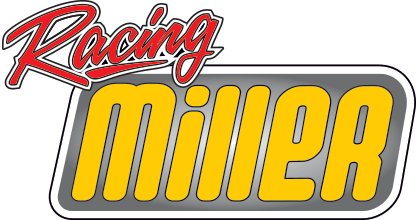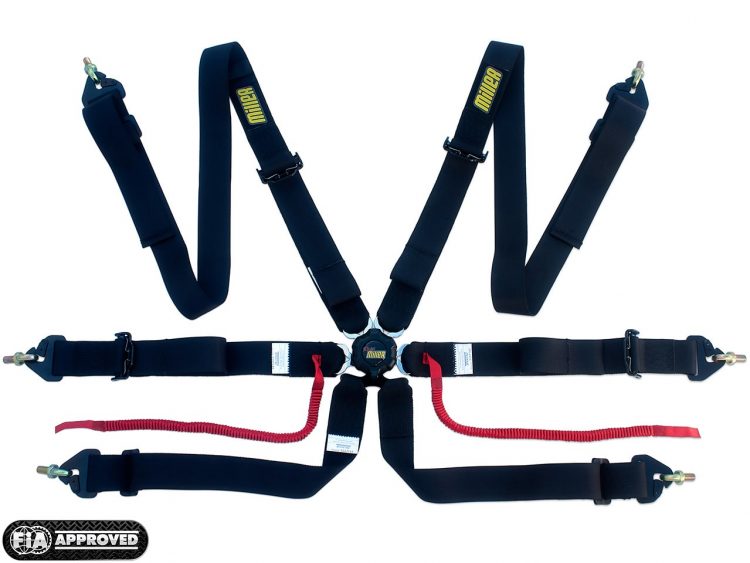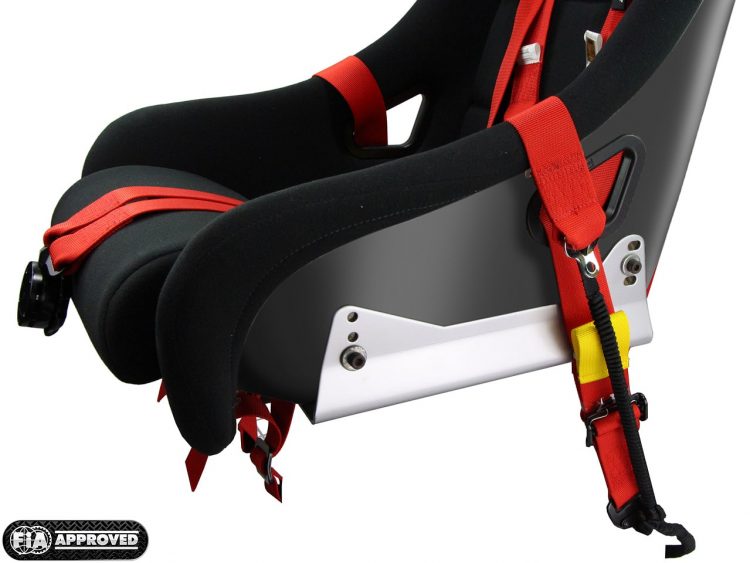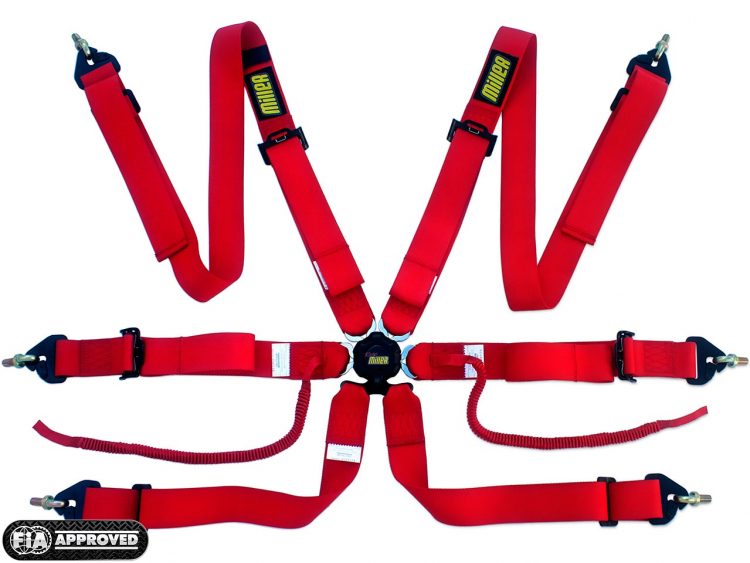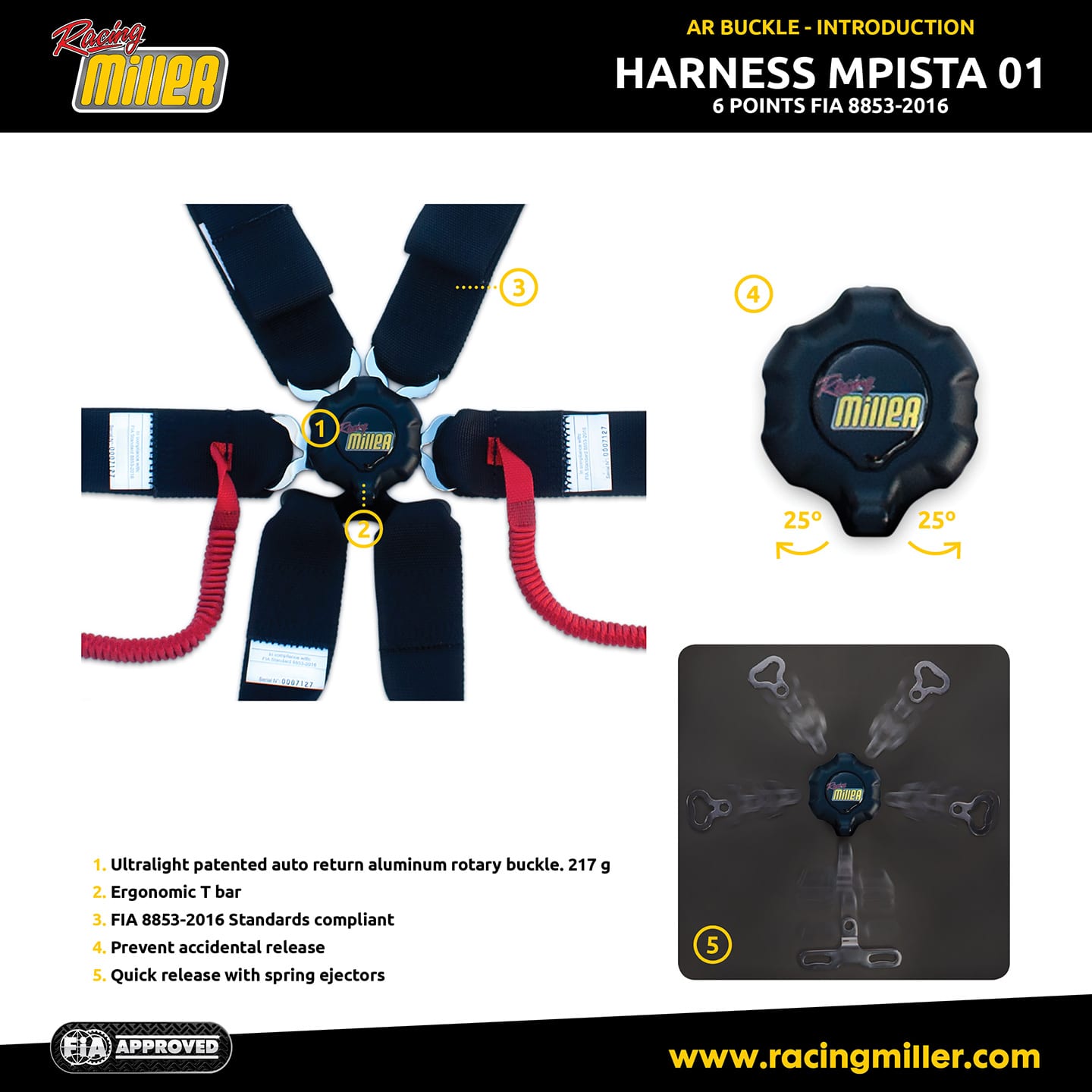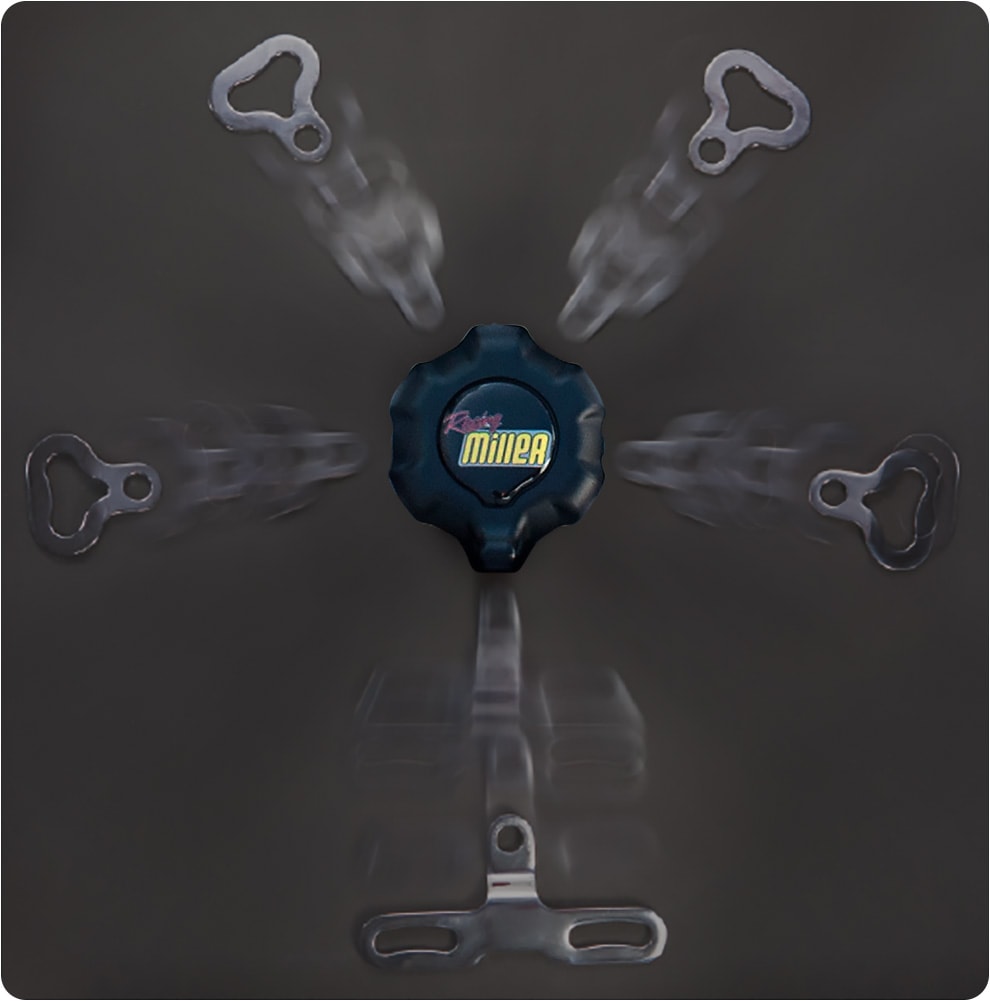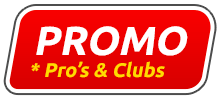Homologation regulations over our 6 point harness and racing belts
These homologation regulations over our 6 point harness and racing belts have been compiled under the auspices of the FIA Sport Department in consultation with the Equipment Approvals Group.
This document provides guidelines for interested parties wishing to apply for an FIA safety equipment homologation by submitting a homologation application dossier over our 6 point harness.
Any manufacturer applying for homologation agrees (i) to comply with the corresponding FIA Standard, the Homologation Agreement and the Homologation Regulations for Safety Equipment 6 Point Harness, and any other regulations related to the safety equipment as may be issued by the FIA from time to time; (ii) to sign the Homologation Agreement.
-
Safety harnesses
HARNESS MPISTA01, 6 Points FIA 8853-2016 – Black
Original price was: 87,90€.48,90€Current price is: 48,90€.
-
Safety harnesses
HARNESS MPISTA01, 6 Points FIA 8853-2016 – Red
Original price was: 87,90€.48,90€Current price is: 48,90€.
-
HOMOLOGATION APPLICATION DOSSIER FOR 6 POINT HARNESS
In order to apply for FIA homologation on racing belts, the ASN shall send an application dossier to the FIA Secretariat at the following address:
- Fédération Internationale de l’Automobile
- Safety Department
- Att : Homologations
- 2 Chemin de Blandonnet, 1215 Geneva, Switzerland
- Phone: +41 22 544 4450
- Email: safety.homologations@fia.com
The homologation application dossier for the 6 point harness shall include the homologation application template (file available on request) and all the documents requested in this template for the racing belts for which homologation is sought. Neither the The test report date nor the date of the test shall not be older more than 1 year on after the date of the submission of the dossier to the FIA.
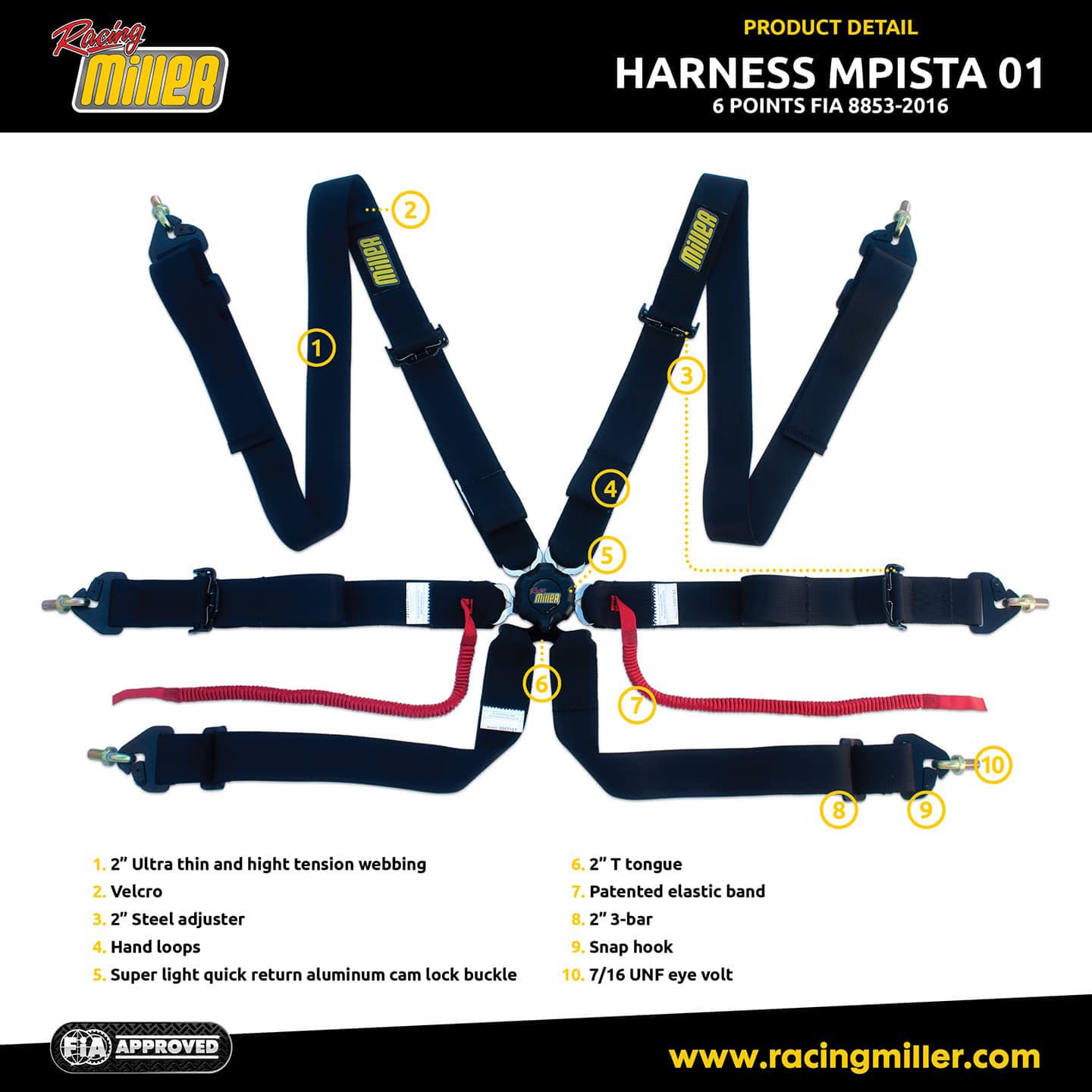
It is the responsibility of a manufacturer to ensure that – and by applying for an FIA homologation the manufacturer represents and warrants that – its application does not infringe the trademark and trade name rights of any third party intellectual property rights, including but not limited to, patents and trademarks.
The FIA may request evidence of a licence to use a third party’s trademark and/or trade name. If the FIA considers that such licence has not been validly obtained it may in its sole discretion request that changes be made to the application or refuse the application.
For reasons of clarity and to avoid confusion amongst consumers the FIA reserves the right not to assign a homologation for safety equipment to an entity that is trading their racing belts under a name that is confusingly similar or identical to the name of a different legal entity that already holds a homologation for the same safety equipment.
-
HOMOLOGATION APPLICATION PROCEDURE
TEST HOUSE OF RACING BELTS
A certain model of racing harness to be homologated shall be tested by an FIA approved test house related with the safety equipment for which homologation is sought and listed in one of the Technical Lists published on the FIA website www.fia.com. The manufacturer shall submit the model of the product to the FIA approved test house that will carry out tests in accordance with the FIA Standard. The test house shall issue a test report on the result of the test performed on the product in accordance with the template provided by the FIA. The test report shall be signed and stamped by the test house and the ASN. For certain models of products, the manufacturer shall fill out the technical dossier in accordance with the template provided by the FIA and this shall then be certified by the racing harness test house.
For certain models of the racing belts, a sample shall be sent to the FIA where required by the FIA standard. The sample shall be certified by the FIA-approved test house and sent directly from the approved test house to the FIA. The test house shall report back to the manufacturer on the state of the sample.
THE ASN
The ASN (National Sporting Authority) acts as the intermediary between the FIA and the manufacturer of the racing belts and liaises with the manufacturer regarding the status of the homologation request. Before sending the homologation application dossier to the FIA, ASNs must verify that it complies with these regulations and that it is complete. The ASN shall use its best efforts to send the homologation application within two weeks of receiving all the documentation from the manufacturer. The manufacturer shall send the homologation application dossier to the ASN of the country where the manufacturer is located. The ASN shall sign and stamp the test report and the homologation application template and submit the homologation application dossier to the FIA on behalf of the manufacturer.
The FIA also publishes the FIA Bulletin, which is distributed to ASNs from time to time, and which provides useful information about the racing belts and updates on FIA Standards, Technical Lists and on homologations generally. All information can also be found online on the FIA website, www.fia.com.
THE FIA
Upon receipt of the homologation application dossier, the FIA will check the application to see whether it is correct, complete and meets the requirements for homologation in accordance with the FIA Standard. Only complete homologation application dossiers will be taken into consideration and it is the responsibility of each manufacturer to ensure that all relevant information and documentation is provided. The FIA Safety Department may request any further information it deems necessary. Manufacturers shall respond to any such request in due course.
-
EXTENSION TO HOMOLOGATION PROCEDURE
Manufacturers applying for an extension of 6 point harness shall follow the same procedure described in Articles art. 1 and art. 2, but the approved test house of their racing belts shall fill out a report for an extension.
The maximum number of extensions is:
- 8853/98 – 7 extensions for the following elements: (1 extension for each element: shoulder, crotch strap, pelvic strap, buckle, tongue, adjusting device, and an unlimited number of extensions for the attachments);
New webbing material will require a new homologation;
8853-2016 – 7 extensions for the following elements: shoulder strap, crotch strap, pelvic strap, Z strap, buckle, tongue, adjusting device,
and an unlimited number of extensions for the attachments.
New webbing material will require a new homologation;
- 8854/98 – 6 extensions for the following elements: (1 extension for each element: shoulder, pelvic strap, buckle, tongue, adjusting device, and an unlimited number of extensions for the attachments);
New webbing material will require a new homologation;
- 8855-1999 – no extensions allowed 3 extensions. The extensions are limited to the seat brackets and inserts, and no extensions are authorised for the seat shell;
- 8856-2000 – according to each item:
o Racing suit – 3 extensions
o Gloves – 3 extensions
o Shoes – 3 extensions
o Undergarments, balaclava and socks – 3 extensions;
- 8856-2018 – according to each item:
o Racing suit – 3 extensions
o Gloves – 3 extensions
o Shoes – 3 extensions
o Undergarments, balaclava and socks – 3 extensions;
- 8857-2001 – no extensions allowed;
- 8858-2010 – according to each item:
o FHR – no extensions allowed 3 extensions;
o Compatible helmet – 3 extensions ( must be certified to one of the FIA standards listed in the Technical List Nº 25 that are approved at the time of submission) and also be approved by the FIA approved test laboratory;
A request to use accessories with the original racing belts shall not be considered as an extension, but must nevertheless follow the same procedure as an extension;
o Tethers – no extensions allowed;
- 8859-2015 – 3 extensions related to the helmet structure.
A request to use accessories shall not be considered as an extension, but must nevertheless follow the same procedure as an extension; - 8860-2010 – 3 extensions related to the helmet structure (must be certified to one of the FIA standards listed in Technical List Nº 25 that are approved at the time of submission) and also be approved by the FIA approved test laboratory;
A request to use accessories with the original racing belts shall not be considered as an extension, but must nevertheless follow the same procedure as an extension;
8860-2018 – 3 extensions related to the helmet structure.
A request to use accessories with the original racing belts shall not be considered as an extension, but must nevertheless follow the same procedure as an extension;
- 8862-2009 – 3 extensions;
The extensions are limited to the seat shell and padding, and the number of extensions for the seat brackets is unlimited;
- 8863‐2013 – 3 extensions;
- The extensions are limited to modifications of the approved hardware and adding new hardware. New webbing material and geometry will require a new homologation;
8864-2013 – no extensions allowed.
- _8865-2015 – 3 extensions;
The extensions are limited to the extinguishing medium capacity, nozzle type, valves, electrical box, flow rate and class of fire approvals. The shape and material of the bottle shall not be considered as an extension, but must nevertheless follow the same procedure as an extension. A new extinguishing medium type or a new number of nozzles will require a new homologation;
Safety fuel bladders – no extensions allowed.
- 8866-2016 – no extensions allowed.
- 8867-2016 – 3 extensions:
The maximum number of extensions for 6 point harness is three for each homologation number including both parts (jacket and pants). Even if an extension is applicable only to one part, it will count towards the total number of extensions.
- 8868-2018 – 3 extensions:
The maximum number of extensions for 6 point harness is three for each homologation number of a biometric device.
If a change requires an extension related to standard 8856-2000, this will not count towards the number of extensions allowed for standard 8868-2018.
- 8869-2018 – no extensions allowed.
- 8870-2018 – 3 extensions.
- 8872-2018 – 3 extensions.
- 8873-2018 – 3 extensions.
- 8874-2018 – 3 extensions.
Manufacturers shall consult the FIA and the approved test house on the viability of the extensions before requesting the extension to the homologation on 6 point harness.
All the homologated safety equipment with the same or higher number of extensions defined in this article cannot have any more extensions to the homologation.
-
HOMOLOGATION ASSIGNMENT PROCEDURE
When the FIA is satisfied that the request for homologation of the racing belts can be granted, the FIA will inform the ASN of the same by email with a copy to the manufacturer. The FIA will also provide the manufacturer with a copy of the standard Homologation Agreement for signature. Once the Homologation Agreement has been signed, the FIA can begin to assign the homologations on our racing belts.
The homologation request shall be fulfilled within a period of six months after the date of receipt at the FIA offices. After this period, the manufacturer shall request a new test report and send a new official request through their ASN.
The FIA will also update the corresponding Technical List published on the FIA website to include the newly homologated model of product at the next possible occasion. The Technical Lists are updated on the first and third Tuesday of each month.
A manufacturer of a newly homologated model of product may request that the FIA updates the Technical List on a different date, subject always to the FIA’s availability to take on the request and to the manufacturer providing a reasonable period of advance notice for said request. The homologation fee for this case will be the double of a normal fee.
The manufacturer can refer to the homologated product as “FIA Approved” or “FIA Compatible” only after the model of product has been included in the Technical List.
-
HOMOLOGATION OF SAFETY EQUIPMENT UNDER NEW BRAND NAME
In order to request the change of name of already homologated safety equipment to a new brand name, the request shall be sent to the FIA through the ASN of the company which is requesting the re-branding. The manufacturer, as well as the distributor, shall fill in the following documents:
- Rebranding agreement (template available on request)
- The FIA label sample for the rebranded product
The ASN shall send the above documents and the homologation application template to the FIA. The FIA will assign the homologation to the specific item of equipment under the new brand name. An official communication will be sent to the ASN and a copy to both manufacturers.
The new brand name of safety equipment is subject to the homologation validity rules according to art. 6.
-
HOMOLOGATION VALIDITY
All equipment which has been homologated before 01.01.2013 will be homologated until 2017. After this date, the manufacturer shall decide whether or not it wishes to submit the equipment to the FIA for re-homologation. If they do, they must submit the re-homologation request in the same calendar month as the original date of homologation (e.g. a piece of equipment originally homologated on 1 January 2010 must be submitted for re-homologation in January 2017). All safety equipment homologated after 01.01.2013 shall have a homologation validity of 5 years.
Upon expiry of the validity of the homologation, the manufacturer may submit the dossier to the FIA for re-homologation. In order to request the re-homologation of a certain product, the ASN shall send the FIA a rehomologation application template on behalf of the manufacturer, requesting the re-homologation for the product 6 (six) months before the expiry of the homologation’s validity. All the dossiers which arrive at the FIA more than 6 (six) months after the homologation validity date will not be accepted.
The rehomologation can be granted if one of the following requisites is fulfilled:
- The manufacturer shall, through its ASN, send the FIA all the documentation necessary to prove that it has a continuous quality control system, which should include random testing of the final product or raw material, in their facilities recognized by one international accreditation body or by their internal laboratory facilities with a continuous quality control procedure or;
- In the case of the manufacturer not fulfilling the above point 1, the manufacturer shall pass a new laboratory test in an FIA approved test house (preferably the same as for the original homologation) in accordance with the applicable FIA Standard. The ASN shall send the FIA the corresponding test report on behalf of the manufacturer.
If the product meets the requirements for re-homologation, the re-homologation number to be assigned by the FIA will be the same as the number that was assigned to the original homologation, and it will also include the extensions assigned to the safety equipment.
In the case of the manufacturer sending all the documents proving that they have an acceptable continuous quality control system, the FIA reserves the right to audit the manufacturer, in order to confirm that the manufacturer follows the quality control of the 6 point harness. The FIA shall advise the manufacturer of the audit during the week preceding the date on which it is to take place. Should the manufacturer not fulfil all the audit’s requirements, the FIA reserves the right to withdraw all the FIA approved safety equipment, and in this case all charges relating to the audit will be charged to the manufacturer.
-
POST-HOMOLOGATION CONTROLS APPLIED TO THE 6 POINT HARNESS HOMOLOGATED BY THE FIA
The racing belts stability and conformity to the FIA Standard may be checked within the framework of the FIA post‐homologation procedure set out in Appendix I.
-
HOMOLOGATION INVOICING
All homologation and re-homologation requests, including those withdrawn by the manufacturer and/or the ASN, shall be invoiced to the ASN according to the fee approved by the FIA General Assembly. The homologation and re-homologation requests that have been refused by the FIA will also be charged according to the approved fees table.
The re-homologation fee will be a purely administrative fee, which will always be less than the full homologation fee.
The invoice shall be issued at the same time that the homologation is assigned to the manufacturer by the FIA, according to the then applicable homologation fees.
POST-HOMOLOGATION CONTROLS APPLIED TO THE PRODUCTS HOMOLOGATED BY THE FIA
ARTICLE 1
ARTICLE 1.1: MANUFACTURER’S ACCEPTANCE OF POST-HOMOLOGATION CONTROLS
In applying for the homologation of his product, the manufacturer automatically undertakes to respect the present document and accepts all the control procedures that the FIA might undertake to guarantee the conformity of the homologated products.
The post-homologation control tests will be carried out in conformity with the conditions set out in the homologation standard. The manufacturer therefore undertakes not to contest any differences in the test conditions that may appear between the post-homologation test and the initial homologation test, insofar as these differences do not exceed the tolerances authorised by the standard.
ARTICLE 1.2: MANUFACTURER’S UNDERTAKING FOR THE STABILITY OF HIS PRODUCT
When applying for the homologation, the manufacturer undertakes not to modify the design, materials and fundamental method of production of the product. The only parts that may be modified without consulting the FIA are those explicitly specified in the FIA standard applying to each product.
ARTICLE 2
At its own discretion, the FIA may conduct one or other of the following tests:
ARTICLE 2.1: ORGANISATION OF POST-HOMOLOGATION CONTROLS CARRIED OUT BY THE FIA: PERFORMANCE TEST
2.1.1. A sample of the product will be taken by the FIA, or by any other FIA appointed person, directly at the production site, at an event or via the distribution channels. In the case of a sample taken at the factory, the manufacturer will be contacted beforehand.
2.1.2. Performance tests will be carried out in compliance with the standard to which the sample is homologated, in an FIA-approved laboratory chosen by the FIA.
2.1.3. Following these tests, there are two possible outcomes:
- _If the sample passes the test, the manufacturer will be notified that a control has been carried out and that the sample complied with the standard.
- _If the sample is found not to comply with the standard, the non-conformity of the product will be established on the sole grounds that the irregularity of this single sample has been noted. The manufacturer will be notified by registered letter of the non-conformity of his product.
At the request of the manufacturer by registered letter, sent to the FIA within the 20 days following the sending of the notification of non-conformity, the same sample may be re-tested by the FIA. In the case of a destructive test, a new sample will be taken in accordance with 2.1.1. The manufacturer will be invited to attend the second test, together with a representative of his ASN. As far as possible, the second control tests will be carried out in the laboratory in which the initial homologation tests were conducted.
If this sample is again found not to comply with the standard, the non-conformity of the product will be established on the sole grounds that the irregularity of this single sample has been noted.
If the sample is found to comply with the standard, the conformity of the product will be re-established.
ARTICLE 2.2: ORGANISATION OF POST-HOMOLOGATION CONTROLS CARRIED OUT BY THE FIA: COMPARISON TEST
2.2.1. A sample of the product will be taken by the FIA, or by any other FIA appointed person, directly at the production site, at an event or via the distribution channels. In the case of a sample taken at the factory, the manufacturer will be contacted beforehand.
2.2.2. Comparison tests will consist in a comparison between the sample and the product initially homologated in order to check that the manufacturer has respected his commitments as set out in article 1.2.
2.2.3 Following these tests, there are two possible outcomes:
- _If the sample passes the test, the manufacturer will be notified that a control has been carried out and that the sample complied.
- _Should the manufacturer fail to respect his commitments as set out in article 1.2 and in particular if the sample proves not to be identical to the product initially homologated with the FIA, the non-conformity of the product will be established on the sole grounds that the irregularity of this single sample has been noted, it being specified that no performance-related considerations may be put forward in defence. The manufacturer will be notified by registered letter of the non-conformity of his product.
At the request of the manufacturer by registered letter, sent to the FIA within the 20 days following the sending of the notification of non-conformity, the same sample may be re-tested by the FIA. In the case of a destructive test, a new sample will be taken in accordance with 2.2.1. The manufacturer will be invited to attend the second test, together with a representative of his ASN. As far as possible, the second control tests will be carried out in the laboratory in which the initial homologation tests were conducted.
If it is found that the manufacturer has failed to respect his commitments as set out in article 1.2, the non-conformity of the product will be established on the sole grounds that the irregularity of this single sample has been noted, it being specified that no performance-related considerations may be put forward in defence.
If it is found that the manufacturer has respected his commitments as set out in article 1.2, the conformity of the product will be re-established.
ARTICLE 3
ARTICLE 3.1: CANCELLATION OF THE HOMOLOGATION
If the non-conformity of the sample of 6 point harness is established in accordance with article 2.1 or 2.2, the homologation may be cancelled. However, the FIA will take into account the existence of special circumstances and may impose alternative sanctions which provide the same guarantees in terms of safety as the cancellation of the homologation would have done.
The following procedure will be used for the cancellation of the homologation:
- _The manufacturer’s ASN will be notified of the cancellation of the FIA homologation of the product.
- _The manufacturer will be responsible for implementing the FIA’s decision at his own expense.
Once the decision to cancel the homologation has been made, the homologation of the product concerned will immediately be withdrawn. It will therefore no longer be accepted for events governed by the FIA regulations.
At the same time, the FIA will announce the sanction publicly.
ARTICLE 3.2: INVOICING OF THE CONTROLS
If the non-conformity of the product is established, the FIA will invoice the manufacturer, via his ASN, for the entire costs occasioned by these control tests. These shall include the costs of purchasing the product, the costs of the tests, and a fixed sum of 2500 CHF for the services of the FIA.
ARTICLE 4: Amendments
The FIA reserves the option of making any change to the content of the above procedure, subject to publication and/or written notification, by whatever means it considers appropriate, to the manufacturers and to any interested parties. Any change thus made will come into effect immediately on publication and/or notification as mentioned above.
List of modifications
28.09.2012
First version
28.06.2013
- HOMOLOGATION APPLICATION DOSSIER
It is the responsibility of a manufacturer to ensure that – and by applying for an FIA homologation the manufacturer represents and warrants that – its application does not infringe the trademark and trade name rights of any third party.
The FIA may request evidence of a licence to use a third party’s trademark and/or trade name. If the FIA considers that such licence has not been validly obtained it may in its sole discretion request that changes be made to the application or refuse the application.
For reasons of clarity and to avoid confusion amongst consumers the FIA reserves the right not to assign a homologation for safety equipment to an entity that is trading under a name that is confusingly similar or identical to the name of a different legal entity that already holds a homologation for the same safety equipment.
- EXTENSION TO HOMOLOGATION PROCEDURE
The maximum number of extensions is:
8855-99 – no extensions allowed 3 extensions. The extensions are limited to the seat brackets, and no extensions are authorised for the seat shell;
- _8858-2010 – according to each item:
A request to use accessories shall not be considered as an extension, but must nevertheless follow the same procedure as an extension;
- _8860-2010 – 3 extensions related to the helmet structure (must be certified to one of the FIA standards listed in Technical List Nº 25 that are approved at the time of submission) and also be approved by the FIA approved test laboratory;
A request to use accessories shall not be considered as an extension, but must nevertheless follow the same procedure as an extension;
12.09.2014
- HOMOLOGATION APPLICATION DOSSIER
Neither the The test report date nor the date of the test shall not be older more than 1 year on after the date of the submission of the dossier to the FIA.
- EXTENSION TO HOMOLOGATION PROCEDURE
The maximum number of extensions is:
- 8853/98 – 7 extensions for the following elements: (1 extension for each element: shoulder, crotch strap, pelvic strap, buckle, tongue, adjusting device, and an unlimited number of extensions for the attachments);
New webbing material will require a new homologation;
- 8854/98 – 6 extensions for the following elements: (1 extension for each element: shoulder, pelvic strap, buckle, tongue, adjusting device, and an unlimited number of extensions for the attachments);
New webbing material will require a new homologation;
- 8862-2009 – 3 extensions;
The extensions are limited to the seat shell and padding, and the number of extensions for the seat brackets is unlimited;
02.12.2015
8853-2016 – 7 extensions for the following elements: shoulder strap, crotch strap, pelvic strap, Z strap, buckle, tongue, adjusting device, and an unlimited number of extensions for the attachments);
New webbing material on 6 point harness will require a new homologation;
- 8859-2015 – 3 extensions related to the helmet structure.
A request to use accessories on 6 point harness shall not be considered as an extension, but must nevertheless follow the same procedure as an extension;
- 8863‐2013 – 3 extensions;
The extensions on 6 point harness are limited to modification of the approved hardware and adding new hardware. New webbing material and geometry will require a new homologation;
- 8865-2015 – 3 extensions;
The extensions on 6 point harness are limited to the extinguishing medium capacity, nozzle type, valves, electrical box, flow rate and class of fire approvals. The shape and material of the bottle shall not be considered as an extension, but must nevertheless follow the same procedure as an extension. A new extinguishing medium type or a new number of nozzles will require a new homologation;
21.09.2017
- EXTENSION TO HOMOLOGATION PROCEDURE
Manufacturers applying for an extension shall follow the same procedure described in art. 1 and art. 2, but the approved test house shall fill out a report for an extension.
The maximum number of extensions is:
- 8855-99 – no extensions allowed 3 extensions. The extensions are limited to the seat brackets and inserts, and no extensions are authorised for the seat shell;
- 8858-2010 – according to each item:
o FHR – no extensions allowed 3 extensions;
o Compatible helmet – 3 extensions ( must be certified to one of the FIA standards listed in the Technical List Nº 25 that are approved at the time of submission) and also be approved by the FIA approved test laboratory;
A request to use accessories over racing belts shall not be considered as an extension, but must nevertheless follow the same procedure as an extension;
o Tethers – no extensions allowed;
- 8866-2016 – no extensions allowed.
- 8867-2016 – 3 extensions:
The maximum number of extensions is three for each homologation number including both parts (jacket and pants). Even if an extension is applicable only to one part, it will count towards the total number of extensions.
09.03.2018
- EXTENSION TO HOMOLOGATION PROCEDURE
Manufacturers applying for an extension shall follow the same procedure described in Articles art. 1 and art. 2, but the approved test house shall fill out a report for an extension.
The maximum number of extensions is:
- 8855-1999 – no extensions allowed 3 extensions. The extensions are limited to the seat brackets and inserts, and no extensions are authorised for the seat shell;
- 8858-2010 – according to each item:
o FHR – no extensions allowed 3 extensions;
- 8860-2018 – 3 extensions related to the helmet structure.
A request to use accessories shall not be considered as an extension, but must nevertheless follow the same procedure as an extension;
- 8868-2018 – 3 extensions:
The maximum number of extensions is three for each homologation number of a biometric device.
If a change requires an extension related to standard 8856-2000, this will not count towards the number of extensions allowed for standard 8868-2018.
07.06.2018
- EXTENSION TO HOMOLOGATION PROCEDURE
- 8856-2018 – according to each item:
o Racing suit – 3 extensions
o Gloves – 3 extensions
o Shoes – 3 extensions
o Undergarments, balaclava and socks – 3 extensions;
- 8870-2018 – 3 extensions
- 8873-2018 – 3 extensions
07.03.2019
- HOMOLOGATION APPLICATION DOSSIER
It is the responsibility of a manufacturer to ensure that – and by applying for an FIA homologation the manufacturer represents and warrants that – its application does not infringe the trademark and trade name rights of any third party intellectual property rights, including but not limited to, patents and trademarks.
The FIA may request evidence of a licence to use a third party’s trademark and/or trade name. If the FIA considers that such licence has not been validly obtained it may in its sole discretion request that changes be made to the application or refuse the application.
- EXTENSION TO HOMOLOGATION PROCEDURE
Manufacturers applying for an extension shall follow the same procedure described in Articles art. 1 and art. 2, but the approved test house shall fill out a report for an extension.
The maximum number of extensions is:
- 8864-2013 – no extensions allowed.
- 8869-2018 – no extensions allowed.
- 8872-2018 – 3 extensions.
- 8874-2018 – 3 extensions.
- HOMOLOGATION VALIDIT OF 6 POINT HARNESS
All equipment and racing belts which has been homologated before 01.01.2013 will be homologated until 2017. After this date, the manufacturer shall decide whether or not it wishes to submit the equipment to the FIA for re-homologation. If they do, they must submit the re-homologation of modified racing bels request in the same calendar month as the original date of homologation (e.g. a piece of equipment originally homologated on 1 January 2010 must be submitted for re-homologation in January 2017). All safety equipment homologated after 01.01.2013 shall have a homologation validity of 5 years.
Upon expiry of the validity of the homologation, the manufacturer may submit the dossier to the FIA for re-homologation. In order to request the re-homologation of a certain product, the ASN shall send the FIA a re-homologation application template on behalf of the manufacturer, requesting the re-homologation for the product 6 (six) months before the expiry of the homologation’s validity. All the dossiers which arrive at the FIA more than 6 (six) months after the homologation validity date will not be accepted.
The re-homologation can be granted if one of the following requisites is fulfilled:
- The manufacturer shall, through its ASN, send the FIA all the documentation necessary to prove that it has a continuous quality control system, which should include random testing of the final product or raw material, in their facilities recognized by one international accreditation body or by their internal laboratory facilities with a continuous quality control procedure or;
- In the case of the manufacturer not fulfilling the above point 1, the manufacturer shall pass a new laboratory test in an FIA approved test house (preferably the same as for the original homologation) in accordance with the applicable FIA Standard. The ASN shall send the FIA the corresponding test report on behalf of the manufacturer.
If the racing belts meets the requirements for re-homologation, the re-homologation number to be assigned by the FIA will be the same as the number that was assigned to the original homologation, and it will also include the extensions assigned to the safety equipment.
-
HOMOLOGATION INVOICING
All homologation and re-homologation requests, including those withdrawn by the manufacturer and/or the ASN, shall be invoiced to the ASN according to the fee approved by the FIA General Assembly. The homologation and re-homologation over this model of racing belts requests that have been refused by the FIA will also be charged according to the approved fees table.
The re-homologation fee will be a purely administrative fee, which will always be less than the full homologation fee.
The invoice shall be issued at the same time that the homologation is assigned to the manufacturer by the FIA, according to the then applicable homologation fees.
FONT: FIA Sport / Safety Department
PERSONAL TEXT ADAPTATION: RACING MILLER
-
Safety harnesses
HARNESS MPISTA01, 6 Points FIA 8853-2016 – Black
Original price was: 87,90€.48,90€Current price is: 48,90€.
-
Safety harnesses
HARNESS MPISTA01, 6 Points FIA 8853-2016 – Red
Original price was: 87,90€.48,90€Current price is: 48,90€.
